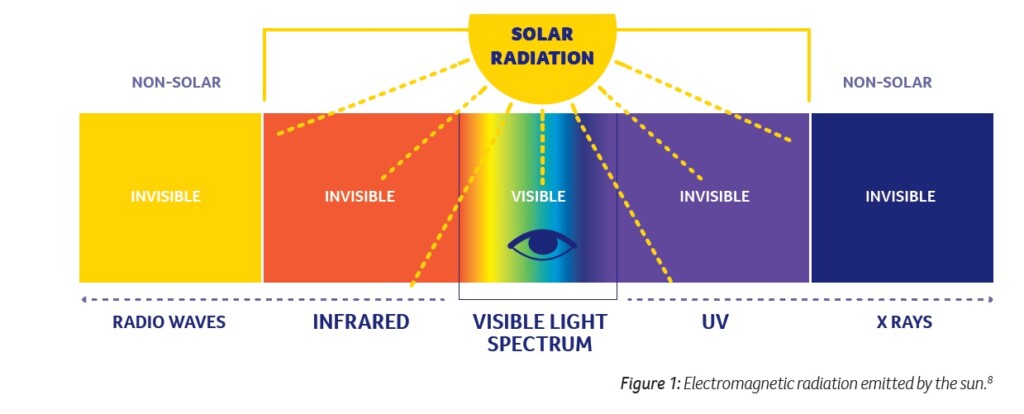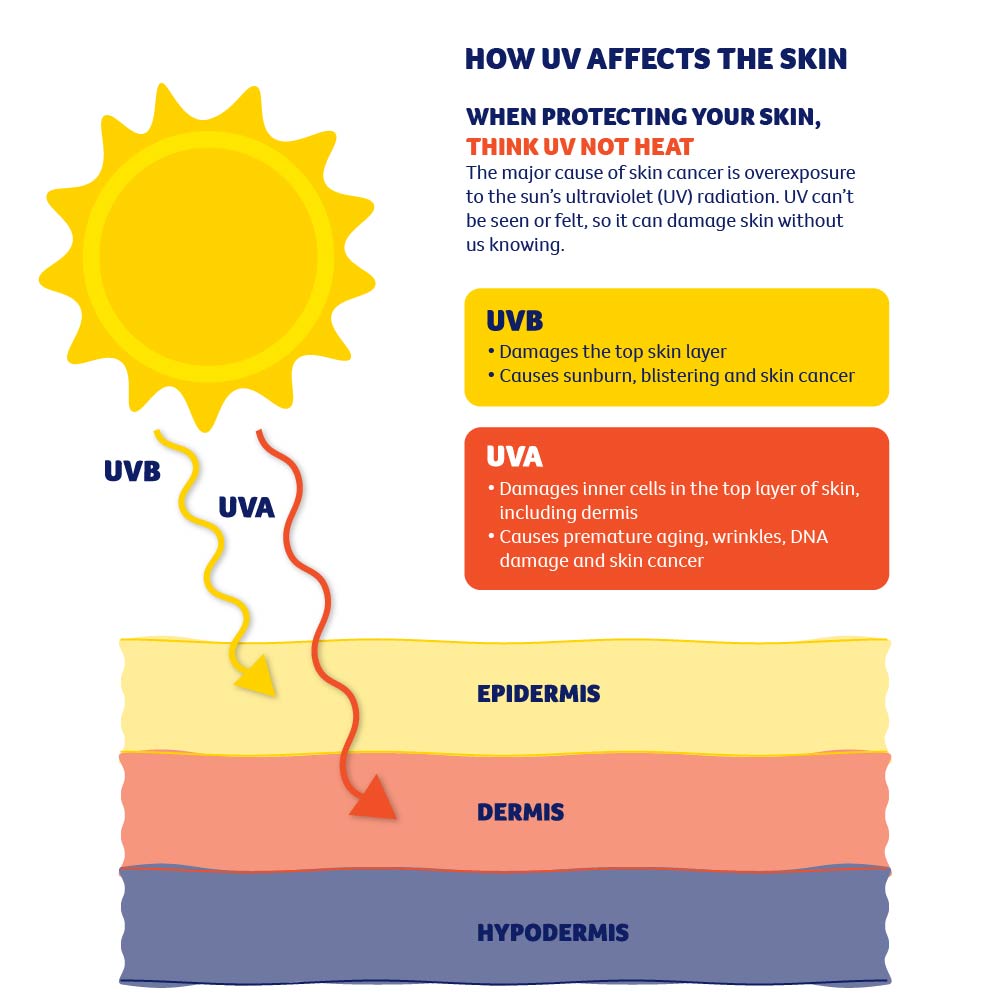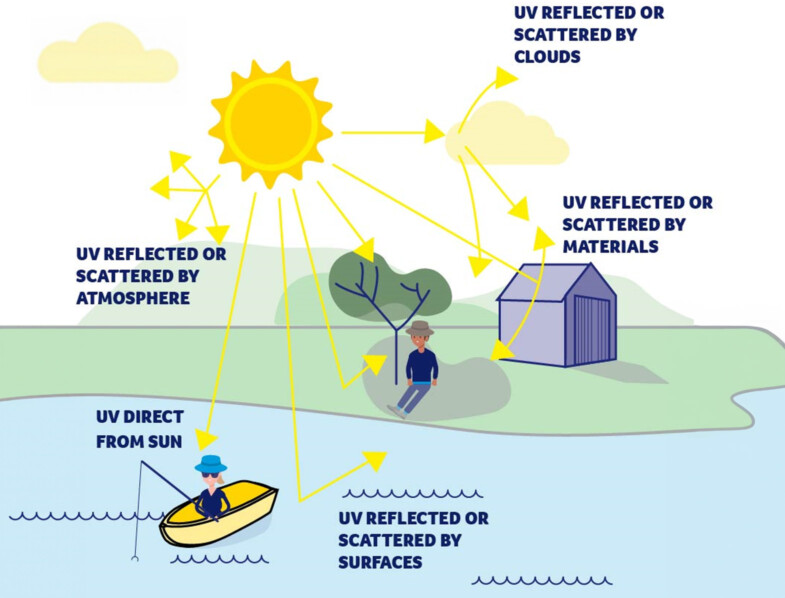For Australians, protecting themselves from UV radiation and remaining SunSmart, is a year-long exercise. While many know to “slip, slop, slap, sleek, and slide”, they may not know what UV radiation is, what types of UV there are, and how it affects us.
We’ve put together a handy guide to walk you through UV radiation, and what you need to know.

UV radiation explained
The sun emits different types of radiation, including visible light or sunlight that we see, infrared radiation (heat) that we feel, and ultraviolet (UV) radiation that can’t be seen or felt.
UV radiation is classified as a human carcinogen, meaning it causes cancer. Every time we overexpose our skin to UV radiation, we damage some of our skin cells and increase our risk of developing skin cancer.
It is important to remember that temperature is not related to UV radiation. As we cannot feel UV, our skin can be damaged without us knowing.
The ABC of UV
There are three types of UV radiation, based on wavelength:
- UVA penetrates deeply into the skin (the dermis) causing genetic damage to cells, photo-ageing (wrinkling, saggy skin etc) and skin cancers. UVA makes up most of the UV radiation that reaches the Earth’s surface.
- UVB damages the top layer of the skin (the epidermis) causing damage to the cells. UVB is responsible for sunburn and skin cancers. .
- UVC is absorbed in the atmosphere and does not reach the Earth’s surface.

Direct vs diffuse UV
UV radiation can reach you on the ground directly from the sun. It can also be scattered by particles in the air. If you are standing in the shade and can still see large areas of sky, the scattered or diffuse UV from those areas of the sky can reach you.

UV and skin cancer
Overexposure to UV radiation is estimated to cause up to 95 per cent of melanomas and 99 per cent of non-melanoma skin cancers, notably basal cell carcinomas (BCCs) and squamous cell carcinomas (SCCs). BCCs and SCCs are found almost exclusively on sun exposed body sites, and almost never occur on skin that is routinely shielded from the sun.
Every time we go into sunlight, our skin cells and genetic material (DNA) are damaged by UV radiation. This UV damage accumulates, meaning it builds up over time. This damage can evolve into skin cancer and have deadly consequences. UV radiation has also been linked with cancer of the eye, cataracts (clouding on the lens of the eye) and pterygium (a growth on the white of the eye).
What affects solar UV?
UV levels are affected by several different factors, including:
- Solar elevation, or how high the sun is in the sky. UV levels increase throughout the morning, and peak around the middle of the day.
- Location, with UV higher the closer you are to the equator.
- Time of year. UV is highest in the summer months.
- Cloud cover reduces but does not eliminate UV.
- Higher altitudes have higher UV.
- Reflective ground surfaces, such as snow, water and sand increase the amount of UV that reaches you.
Understanding the UV Index
The UV index was developed by the World Health Organization (WHO) to measure UV levels on Earth’s surface.
The index starts at zero and has no upper limit.
UV levels are categorised as:
- low (1-2)
- moderate (3-5)
- high (6-7)
- very high (8-10)
- extreme (11 and above).
In summer in WA, UV levels average in the extreme range nearly every day.
When to use sun protection
Sun protection is necessary when UV is three or above.
You can check the daily UV forecast at:
- The MyUV website
- The free SunSmart Global UV app
- Bureau of Meteorology weather forecast page and app
- Other news and weather sources
Remember to protect your skin in 5 ways:
- Slip on protective clothing that covers as much skin as possible.
- Slop on SPF50+ sunscreen that is labelled as ‘broad-spectrum’ – this will filter both UVA and UVB radiation.
- Slap on a hat that provides as much shade as possible to the face, head, neck, ears and eyes.
- Seek shade that casts a dark shadow.
- Slide on sunglasses.
